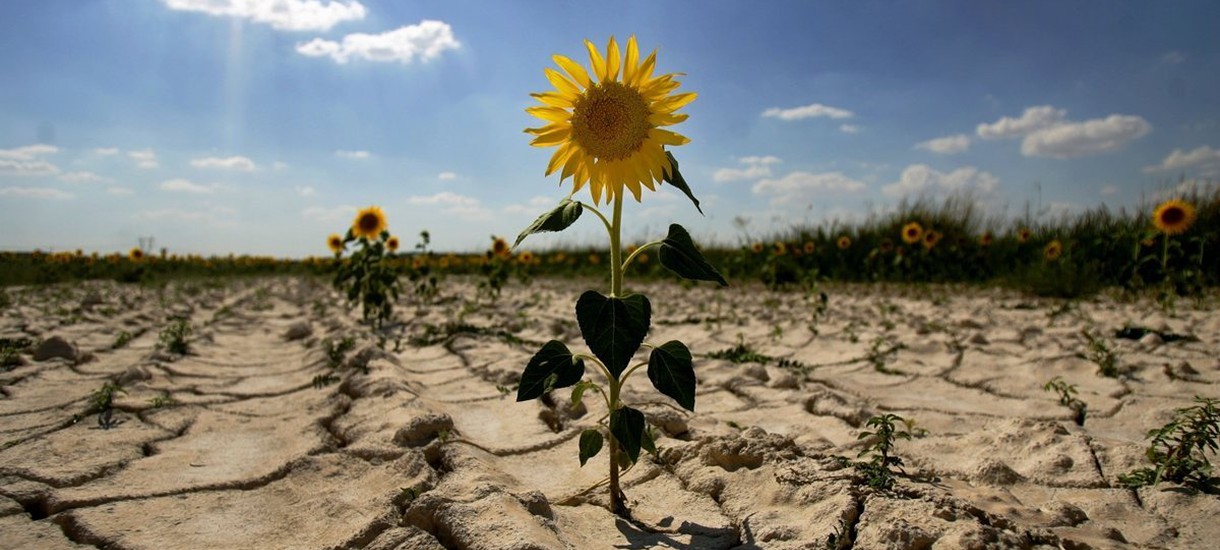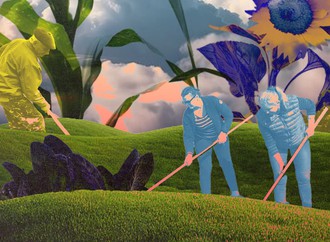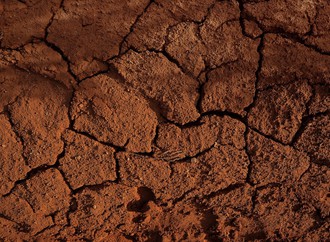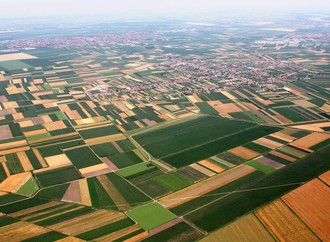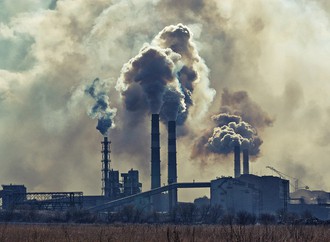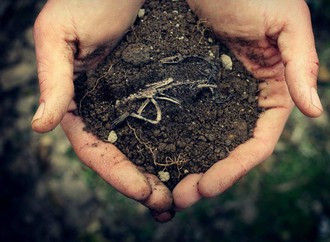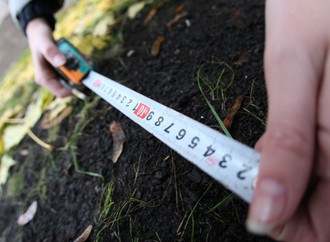What will be the dynamics of soil erosion and desertification in Ukraine after the launch of the agricultural land market? How will these processes affect the environment? And what should the Ukrainian authorities do in order to regain control over the ecological condition of the land?
We discussed these questions with Oleksiy Burkovsky, Ukrainian ecologist, professional agronomist, and activist of the NGO All-Ukrainian Ecological League and the public campaign “Save Ukrainian Steppes!”
What have been the general dynamics of the ecological condition of soil in Ukraine since independence? Is there systematic monitoring of this condition?
The dynamics have been negative, and this is officially recognized. However, this situation has been observed since Soviet times, when the present terrible structure of land use was formed. There could be no other outcome. Arable land makes up 54% of the territory of our country. This is ecological insanity that will lead to desertification.
Sections 2.1 and 2.2 of the 2012 Extended Five-Year Land Desertification and Degradation Report state that “the land use in Ukraine is close to a critical condition today. The total area of agricultural land affected by water erosion alone is 10.6 million hectares of arable land (32% of its total area). …annual area growth of eroded arable land in Ukraine reaches 60-80 thousand hectares; …annual humus loss is 650 kilograms per hectare… and the poor ecological condition of the land is one of the main causes of environmental degradation.”
This is official data, which means that the condition of the land in Ukraine is monitored. This work is done by the State Service of Geodesy, Cartography and Cadastre of Ukraine, specialized research institutes, such as the National Scientific Center “O. N. Sokolovsky Institute of Soil Science and Agrochemistry,” and the Institute of Agroecology and Environmental Management of the National Academy of Agrarian Sciences of Ukraine (NAAS). It is difficult to say how systematic this monitoring is, because, as is well known, science in Ukraine is underfunded and in general the Ukrainian authorities don’t listen to scientists. By the way, in 2018, the researchers of the Sokolovsky Institute of Soil Science published an extremely interesting book Soil Degradation in the World: Experience in Its Prevention and Reversal, edited by the NAAS Academician Vitaliy Medvedev. But who is going read it? Can anyone read any news in the Ukrainian mainstream online media about local research or popular science literature? For the first time since independence, we created two feature-length popular science films about nature, but none of the major TV channels have aired them. And one of the films, Tor Steppes: Life, Death ... Resurrection? is largely about the issue of land. If nobody is interested in the original Ukrainian popular science cinema, then what can be said of scientific literature?
How have military actions in eastern Ukraine affected the condition of the land?
Any military action has an impact on the soil surface – its extent is another issue. Since 2015, the contact line has been relatively settled, so this negative factor affects a limited area. Meanwhile, arable land occupies a large part of the country, every square centimeter of which is treated with poisonous chemicals several times a year, every year, but for some reason this fact is of little interest to the general public.
A recent study has found that 4.3 million hectares of land are absent from the state cadastre of Ukraine. Where has this land “disappeared” and what consequences can this have for environmental policy, in particular if the moratorium on the sale of land is lifted?
What is unaccounted for are mostly certain land parcels of state and communal property. On the other hand, according to various estimates, in Ukraine there are 1-1.5 million hectares of distributed land shares, which have not been claimed. The landowners died, and their heirs did not claim ownership. Further, when the land was first distributed, the owners of the land shares were issued certificates, which provided a nominal, not a specific land share. Then land certificates were replaced with land deeds. A land deed is a document for a particular parcel of land and is more or less well regulated by the state. If the heirs have not yet replaced the certificate with the deed, then this land share is in limbo. Given the scarcity of land for conservation and the vast area of arable land, any “unaccountable” land in active agricultural use will exacerbate the problem of erosion and desertification. Arable land officially occupies 54% of the territory of Ukraine, but there is a large amount of illegally cultivated land, so the actual area of arable land is even greater. The problem is not so much the lifting of the moratorium, as the appropriate use of the land and its structure.

One of the common arguments for extending the moratorium is the threat of land concentration in the hands of large latifundists. At the same time, you write in your article that its implementation was prompted by the earlier decision of the Ukrainian government to distribute the vast majority of agricultural land as shares. What were the real reasons for the moratorium and did environmental arguments play any role in this?
Unfortunately, environmental arguments have never been taken into account in land policy. In the Soviet Union, the overall landscape balance looked quite decent, but it was just an average indicator: the catastrophic level of soil exploitation in Ukraine didn't bother anyone against the backdrop of the vast wilderness of Siberia. But when Ukraine gained independence, there was a chance to remedy this ugly situation. Before the distribution of agricultural land shares, scientists suggested that 9 million hectares of eroded arable land be taken out of use and converted into meadows, steppes and forests. The NAAS Academician Viktor Saiko developed the necessary methodological recommendations. But this never happened.
I think the moratorium problem has to do with the scale of the land distribution. Leonid Kuchma's team implemented the distribution of land shares, and his successors were appalled by the implications. Let me remind you that almost two thirds of all agricultural land were distributed in one fell swoop. In my view, the successors were simply afraid of taking responsibility under these conditions and launching such a large land market, and therefore shifted this burden to the next government, which also did not dare to launch the market. Today 84% of arable land is privately owned. This has meant that the state has almost completely lost control over the condition of the land. If in the ‘90s a fourth or even a third of the agricultural land had been distributed as shares, it wouldn’t have been necessary to impose a moratorium, because the state would have kept the controlling stake in the land mass. All subsequent governments and parliaments became hostage to the decisions made by the highest leadership of the state in the second half of the 1990s.
Despite the moratorium on its sale, there has been a striking concentration of land in the hands of agricultural holdings in Ukraine. At the same time, critics of the moratorium claim that it stifles investment in agriculture and leads to the decline of rural areas. What are the real consequences of its implementation?
The concentration of land in the hands of agricultural holdings occurred not because of the moratorium, but due to the distribution of land shares and the absence of any legal mechanisms to demonopolize the rental of land. Most critics of the moratorium can’t see the forest for the trees, as the moratorium is not the key issue. It is not the cause, but the consequence of the careless land reform of the 1990s. It was utter absurdity to first distribute the land shares and then to think about the legal framework. It had to be the other way around: first, create the legal framework and then effect the distribution of land shares. There is no point in assessing the consequences of the moratorium. We need to realize the terrible flaws of the distribution of land shares and try to correct them. But we can also talk about the real risk: land reform can lead Ukraine not to Europe, but much further than that – to Latin America.
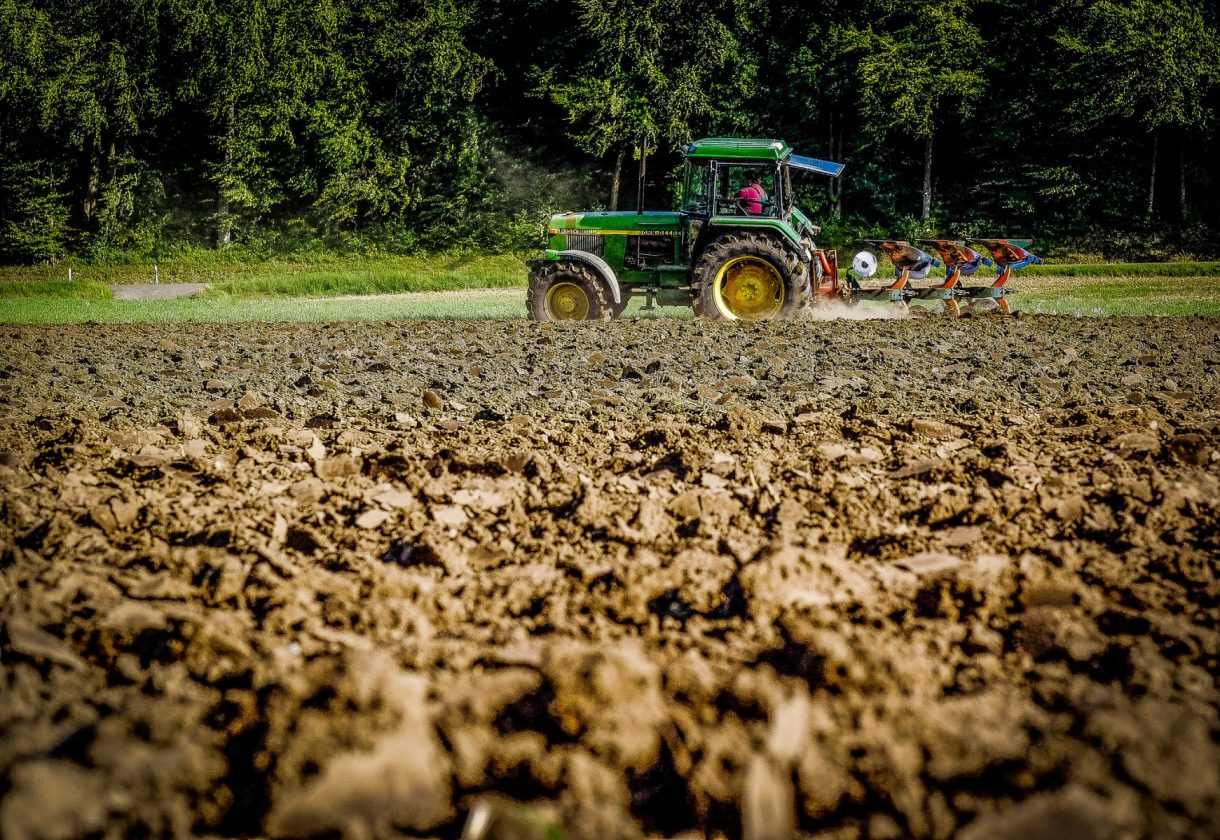
What is the current role of land degradation and desertification in the decline of rural areas?
Figuratively speaking, desertification doesn’t care whether it is a village or a city. There is already a shortage of drinking water in the eastern and southern regions of Ukraine, and I’m afraid that this trend will intensify. We have two huge problems that lead to desertification. The first one is the scarcity of natural ecosystems that create an adequate vegetation cover and a normal soil profile, i.e. a proper water basin. The reason for such dynamics is, first and foremost, the excessively large size of arable land. The second cause is the destruction of rivers – from small brooks to the Dnieper – due to the high number of reservoirs and ponds.
Does ownership have a direct impact on the condition of the land?
I argue that it is necessary to increase the area of state-owned land. Oddly enough, this cannot be done without the lifting of the moratorium. I am in favor of a temporary state monopoly on the sale of land, or rather on its purchase. Yes, it is a hard task to force state agencies to implement environmental programs, but it is even more difficult to make private owners do this. At least it is easier for NGOs to hold state agencies accountable than private land users.
There is also an option to drastically raise the tax on eroded arable land in the case of its further cultivation, but without the possibility of selling it this will be a trap for landowners. So, the moratorium should be lifted in this case.
But state ownership doesn’t exclude the possibility of intensive farming that will lead to erosion, loss of fertility and desertification.
The state should purchase eroded arable land using environmental funds, conserve this land and transfer it to the nature reserve fund and the eco-network. I see no other solution. It is impossible to nationalize the distributed land shares, but the mistake of the 90s needs to be corrected somehow. This is a compromise between those who want to sell their shares and the public interest to prevent large companies from buying up land. Thus, if the eroded land is conserved by the state, planted with forests, restored as steppes and meadows and transferred to the category of protected land, then its intensive cultivation will be out of the question.
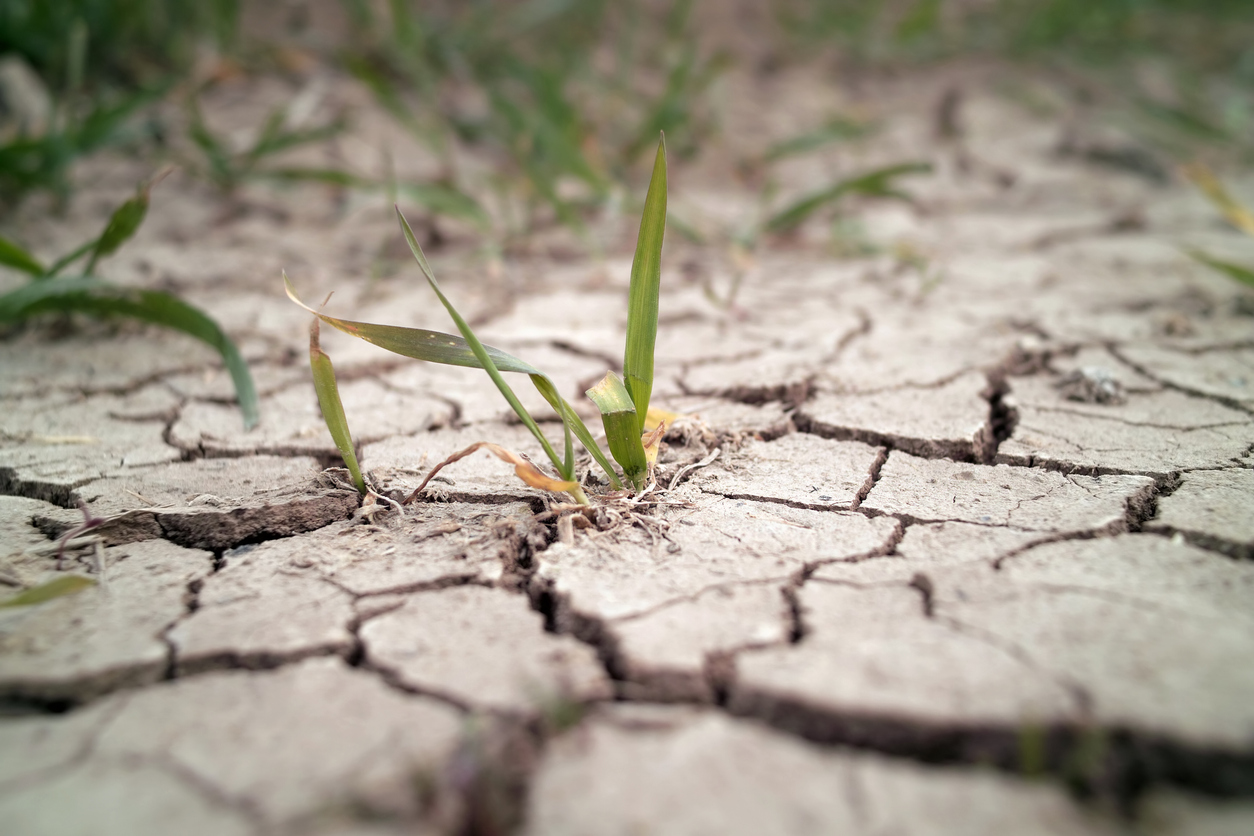
On the other hand, the state could lease its fertile arable land on preferential terms to small farmers, thus preventing the monopolization of rent by large agricultural holdings. Now some members of the government say that small farmers will be able to get preferential loans. That is, they are offered preferential credit bondage. Why on earth do they need it? It is better to give farmers a preferential lease of the land, and they will not need loans. But to give them land, the state should own an adequate amount of it. In unregulated rent relations, small farmers have little chance of beating large companies because the latter have greater financial resources to persuade the share owner to lease the land to them.
To what extent is land degradation caused by the large proportion of ploughland in Ukraine, and by specific policies of agricultural holdings, focused on the cultivation of monocultures? How different would the situation be if small and medium-sized farmers dominated in Ukraine?
The large proportion of ploughland is the key problem here. Transferring the land to small and medium-sized farmers will not reduce the proportion of ploughland. The average proportion of arable land in the EU is 25%, whereas in Ukraine it is 54%. The problem of the large proportion of ploughland is a strategic issue of the environmental policy of the state. Compliance with the requirements of crop rotation on arable land is a tactical issue of observing the principles of agriculture. Crop rotation certainly mitigates the negative impact of agriculture on soils, but this does not solve the key issue – the imbalance between natural and anthropogenic territories. Roughly speaking, it is better to have 10% of ploughland with total monocultures than 50% of ploughland, cultivated in accordance with all the crop rotation rules.
In your article, you suggest that the state should buy millions of hectares of land to protect the environment. But the obvious response of the skeptics would be that there’s no money for this.
No money? Millions of hryvnias from environmental funds are spent inappropriately, for example for the refurbishment of city parks, although this is the prerogative of housing and utilities services, which have nothing to do with environmental policy. How do cutting old trees in parks and paving large parts of those parks, as well as arranging space for cafes and rides contribute to the recovery of ecosystems? A town with a population of 40 thousand people receives 18 million UAH from environmental funds for the refurbishment of a park. Imagine how much eroded land we could buy for that amount of money. And this is just one example of inappropriate expenditures.
What is your forecast for desertification and land degradation if the current approach to cultivation remains unchanged? Why is it important to increase the percentage of uncultivated land?
Geobotanists already identify areas of dry steppe in Ukraine. This is the first step towards the emergence of semi-deserts. A desert is not sand and dunes but the absence of vegetation and water. If humans destroy a steppe, a forest or a swamp, they thus deprive themselves of water. After all, only natural ecosystems can maintain a normal hydrological regime, the stability of rivers and groundwater. People who have lived in the same area for several decades and closely observe what has been happening to the rivers and wells don’t need any other proof. They see everything with their own eyes. Unfortunately, this is not visible from metropolitan offices. There have been significant changes to small rivers in the last 20-30 years, and I think the next 20 years will be critical.

Wildlife creates and maintains an environment suitable for human life. It is an integral and key factor in the formation of the atmosphere, hydrological and temperature regime, soils, geochemical cycles and the climate as a whole. Currently, the area of natural, untransformed ecosystems is only 23% of the planet’s dry land, while the necessary minimum is 67%. Today we live off the legacy of what wildlife created in past eras. Forests, steppes, swamps, rivers are donor ecosystems, and anthropogenic territories are acceptors; that is they accept and live on the substance and energy flows from natural ecosystems.
Is there a national soil restoration program? Is there an alternative program, for example from environmental activists?
There are several legal acts declaring the fight against desertification and proposing a solution to the problem of landscape imbalance. They suggest the right measures, including the reduction of arable land, its conservation, steppe restoration and reforestation. Yet they do not explain how to do this when 84% of arable land has been distributed as shares and is now privately owned. How can we do this in the framework of decentralization that envisages giving state agricultural land to territorial communities? That is why public activists propose practical mechanisms for achieving what the state has declared in its legal acts:
1. Stop the sale of state land.
2. Don’t transfer eroded state land to territorial communities.
3. Buy back eroded arable land from private owners and conserve it.
4. Legally prescribe that at least 30% of the money from environmental funds should go for the purchase of such land, at least before achieving the figures stipulated in the Strategy of the State Environmental Policy of Ukraine for the period up to 2030.
Speaking of what can be done right now, today about 10 million hectares of land are in state ownership, which is almost a quarter of agricultural land. Is it possible to at least take this land out of agricultural cultivation, thereby expanding the nature reserve fund? How realistic is this scenario?
It is not about all of the 10 million hectares, but only the eroded arable land. Fertile state land can continue to be used for agriculture. On the other hand, eroded private arable land should also be taken out of use. What is the point of taking out of use fertile black soil, owned by the state, while exploiting eroded private land shares? Land policy must be consistent. The state should have made this step a quarter of a century ago. To understand how realistic this scenario is, we need to analyze the length of the leases on the state land that the state has given to agribusinesses. Perhaps raising the tax on the eroded arable land in cultivation will help to reach a settlement agreement between the state and agribusinesses, if the length of the lease is a few decades.
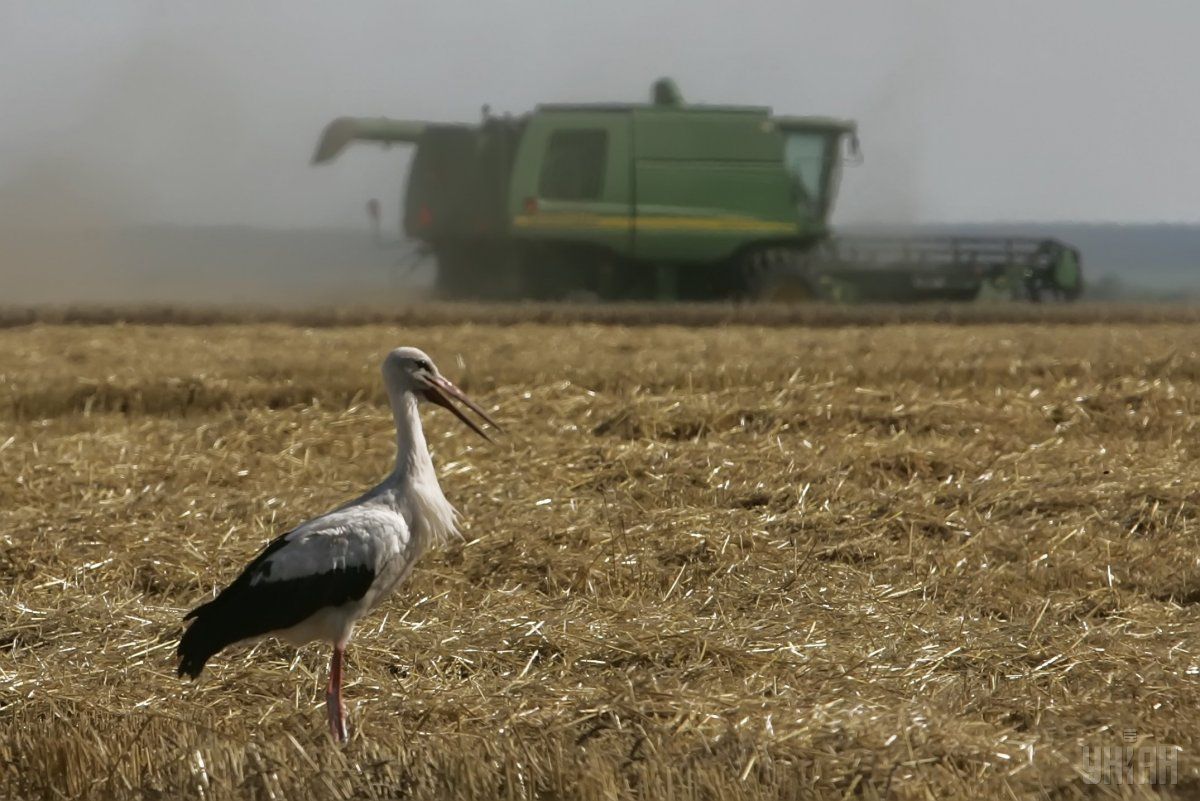
You argue that the state should buy up agricultural land, retaining the monopoly right over 60% of the land in Ukraine. Are there any successful examples of such redistribution without a revolution?
Yes, in my opinion, most of the land should be in the hands of the state, primarily for effective environmental policy, and only then, secondarily, for economic policy. Nature can exist without economy, but economy cannot exist without nature. Earth is first and foremost the habitat of natural ecosystems. Soil determines the water regime and hence the climate. Earth is not a servant who has to satisfy our culinary needs. This is especially true of environmentally disastrous meat production, when 70-80% of farmland is used to feed livestock, not people. As for redistribution and revolution, if an adequate legal framework is developed, implemented and controlled by the state and the public, then why do we need a revolution?
The problem is that developed countries have had no experience in democratizing the Soviet kolkhoz (collective farm) system. That is why we will have to fix the situation ourselves, relying primarily on our knowledge and reason, rather than someone’s experience, that is simply not there.
